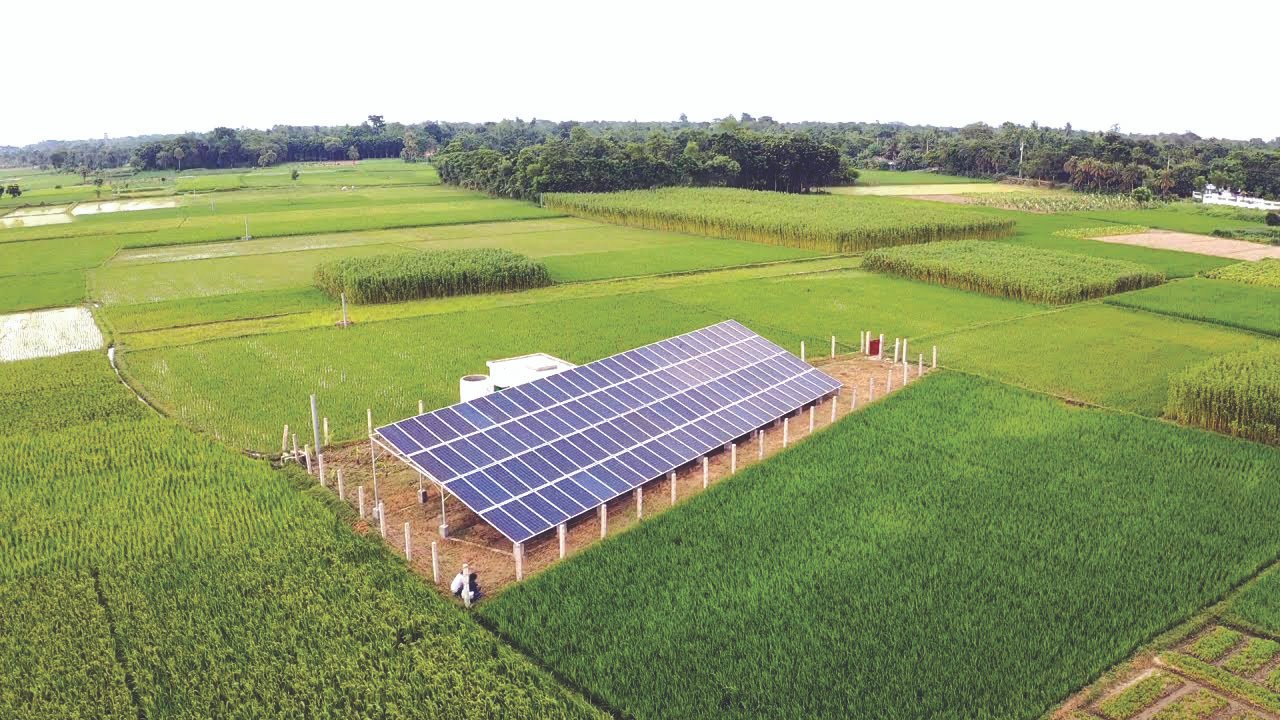
Millions of people worldwide now live with the adverse consequences of climate change on every single day, and Bangladesh is one of the nations most vulnerable. Almost every year, Bangladesh experiences floods, cyclones, riverbank erosion, salinity intrusion, and erratic rainfall due to its low-lying terrain, dense population, and reliance on agriculture and rivers. Bangladesh produces less than 0.5% of the world's greenhouse gas emissions, which is a very small contribution. Despite this, the nation is committed to contributing to global climate action while simultaneously looking for assistance to safeguard its citizens and economy. In this regard, Article 6 of the Paris Agreement becomes an essential instrument for Bangladesh, providing a framework that enables nations to collaborate, pool resources, and develop creative solutions to cut emissions and prepare for climate change. Bangladesh's climate vulnerability may be turned into a chance for resilient development and sustainable progress if Article 6 is understood and used appropriately.
The distinctive feature of Article 6 is that it establishes pathways for global cooperation via both market-based and non-market-based mechanisms. By trading emission reductions across national borders, market mechanisms like carbon trading allow nations to fulfill a portion of their Nationally Determined Contributions (NDCs). Conversely, non-market methods may not depend on financial transactions and instead emphasize collaborative ventures, information exchange, and capacity building. These measures are useful avenues for Bangladesh to raise funds, gain access to new technologies, and expand climate-resilient projects that benefit millions of people in vulnerable regions; they are not just theoretical regulations.

The climatic profile of Bangladesh emphasizes how urgent this collaboration is. The Global Climate Risk Index 2024 ranks Bangladesh among the top ten countries most affected by extreme weather events. Cyclone Amphan in 2020, for example, caused massive destruction along the coastal belt, displacing hundreds of thousands of people, damaging crops, and affecting livelihoods. Similarly, riverbank erosion annually threatens thousands of families, forcing them to relocate and lose their land and homes. Forecasts indicate that if global warming persists uncontrolled, climate-related damages might cost Bangladesh up to 9% of its GDP by 2050. Bangladesh's updated Nationally Determined Contributions (NDCs) seek to cut emissions by 6.73% unconditionally and up to 21.85% conditionally by 2030 in light of this. Article 6 is a strategic weapon in the nation's climate toolbox since achieving these goals calls for both home and foreign assistance.
Article 6.2, one of the main elements of Article 6, permits nations to implement Internationally Transferred Mitigation Outcomes (ITMOs) in partnerships. In short, ITMOs allow nations to receive credits for confirmed reductions in emissions that can be applied to their climate goals. This system can generate genuine prospects for Bangladesh. For example, switching from conventional brick kilns to greener technologies like zigzag kilns, tunnel kilns, or hybrid Hoffman kilns can drastically cut carbon emissions. These reductions can generate income for Bangladesh that can be used to fund more climate adaptation initiatives if they are validated and traded globally. Similarly, ITMOs can be produced by growing solar energy projects, biogas facilities, and energy-efficient industrial systems, transforming regional climate action into international collaboration. In addition to providing financial resources, these chances hasten the adoption of contemporary technology and sustainable practices, which are essential for a nation trying to strike a balance between environmental preservation and economic growth.
The Kyoto Protocol's Clean Development Mechanism (CDM) is thought to have been replaced by the mitigation and sustainable development mechanism established in Article 6.4. Countries are able to carry out project-based emission reduction programs that produce internationally recognized credits thanks to this system. Bangladesh stands to gain a great deal from this structure. Under this method, waste-to-energy programs, renewable energy projects, and natural solutions like Sundarbans mangrove restoration can all be eligible. In addition to lowering emissions, these initiatives improve neighborhood resilience. Restoring mangroves along the shore, for instance, fortifies natural defenses against storm surges and cyclones, safeguarding agriculture, fisheries, and communities. Crucially, Article 6.4 highlights that mitigation strategies must support sustainable development, guaranteeing that initiatives offer co-benefits to the environment, society, and economy. This can result in the creation of jobs for rural communities in Bangladesh, the improvement of soil and water quality, and the encouragement of inclusive growth in tandem with climate action.
A developing nation like Bangladesh may find Article 6.8's emphasis on non-market strategies extremely beneficial. Without the need for cash transfers or carbon credits, non-market strategies promote global cooperation in fields including research, technological transfer, and capacity building. Article 6.8 collaborations, for example, might assist Bangladesh in implementing climate-smart agriculture practices, enhancing community-based adaptation initiatives, and fortifying its early warning and climate data gathering systems. While strengthening national planning and governance capabilities, such collaboration can guarantee that adaptation initiatives reach the most vulnerable groups, including smallholder farmers, fishermen, and coastal communities. Additionally, information exchange is encouraged by non-market channels, which are crucial for a nation looking to develop its capacity in catastrophe risk reduction, resilient infrastructure, and renewable energy.
While Article 6 presents numerous prospects, successful implementation is not without obstacles. Bangladesh has to establish comprehensive institutional structures to track, document, and validate carbon trades and emission reductions. The country is now short of trained individuals, technological capabilities, and financing to deal with complicated carbon markets. Concerns over the fairness of market mechanisms are also widespread. The climate advantages for vulnerable nations like Bangladesh may be limited if developed nations utilize carbon trading as a means of offsetting emissions without implementing significant domestic reductions. Therefore, it is essential to make sure that Article 6 projects actually promote climate resilience and sustainable development. For Bangladesh, this entails giving top priority to initiatives that not only lower emissions but also safeguard ecosystems, boost social resilience, and offer real advantages to nearby populations.
In order to effectively implement Article 6, Bangladesh requires a national carbon cooperation strategy. This entails establishing a nationwide carbon credit registry, standardizing project approval procedures, and guaranteeing open reporting to prevent duplication. Energy-efficient industrial processes, clean cooking technologies, and renewable energy can all be scaled up through public-private partnerships. Institutional capacity will be increased by providing experienced staff, digital resources, and international assistance to government organizations like the Department of Environment (DoE) and the Ministry of Environment, Forests, and Climate Change (MoEFCC). To maximize the advantages of Article 6 mechanisms, regional cooperation via SAARC and BIMSTEC platforms can also assist Bangladesh in exchanging information, gaining access to technology, and taking part in cooperative mitigation projects.
.jpg)
Another crucial factor is to ensure community involvement and equity. Projects under Article 6 must take into account the requirements of the most vulnerable groups impacted by climate change. In Bangladesh, floods, cyclones, and saline intrusion frequently disproportionately affect women, children, and rural populations. Projects covered by Article 6 can enhance local ownership, provide social co-benefits, and boost the efficacy of climate initiatives by incorporating these groups in the planning and execution stages. In order to guarantee that the advantages of climate action go beyond carbon accounting and monetary gains, community-based strategies also promote awareness, capacity building, and sustainable behavior change.
Bangladesh has already initiated actions to comply with Article 6. With assistance from foreign partners, pilot projects on carbon price, renewable energy certification, and emission accounting are being created. While making sure that emission reduction programs are in line with sustainable development aspirations, these initiatives seek to provide the groundwork for long-term involvement in global carbon markets. The necessity of supporting Least Developed Countries (LDCs) and Climate Vulnerable Nations in gaining access to capital, technology, and capability under Article 6 is another way that Bangladesh continues to promote justice and fairness in international climate negotiations.
Bangladesh has an exceptional opportunity to coordinate native climate action with international collaboration through Article 6 of the Paris Agreement. It is a bridge between aspiration and action, between vulnerability and resilience, and it is more than just a collection of technical rules. Bangladesh can mobilize resources, embrace cutting-edge technologies, and create communities that are climate resilient through market processes, project-based cooperation, and non-market partnerships. In addition, careful governance, openness, and inclusivity are necessary to guarantee that these mechanisms actually help the ecosystems and people most impacted by climate change. When properly applied, Article 6 can turn Bangladesh's climatic problems into chances for social justice, economic expansion, and sustainable development. In order to fulfill its obligations under the Paris Agreement and the aspirations of its citizens for a climate-secure country, Bangladesh can forge ahead with a greener, safer, and more prosperous future by utilizing international cooperation, encouraging local innovation, and incorporating climate resilience into all facets of development.
Download this Article As PDF /userfiles/EP_23_10+_COPS_Kamruzzaman.pdf
Professor Dr. Ahmad Kamruzzaman Majumder, Dean, Faculty of Science, Professor, Department of Environmental Science, Stamford University Bangladesh, Joint Secretary, Bangladesh Poribesh Andolon (BAPA) & Chairman, Center for Atmospheric Pollution Studies (CAPS).



